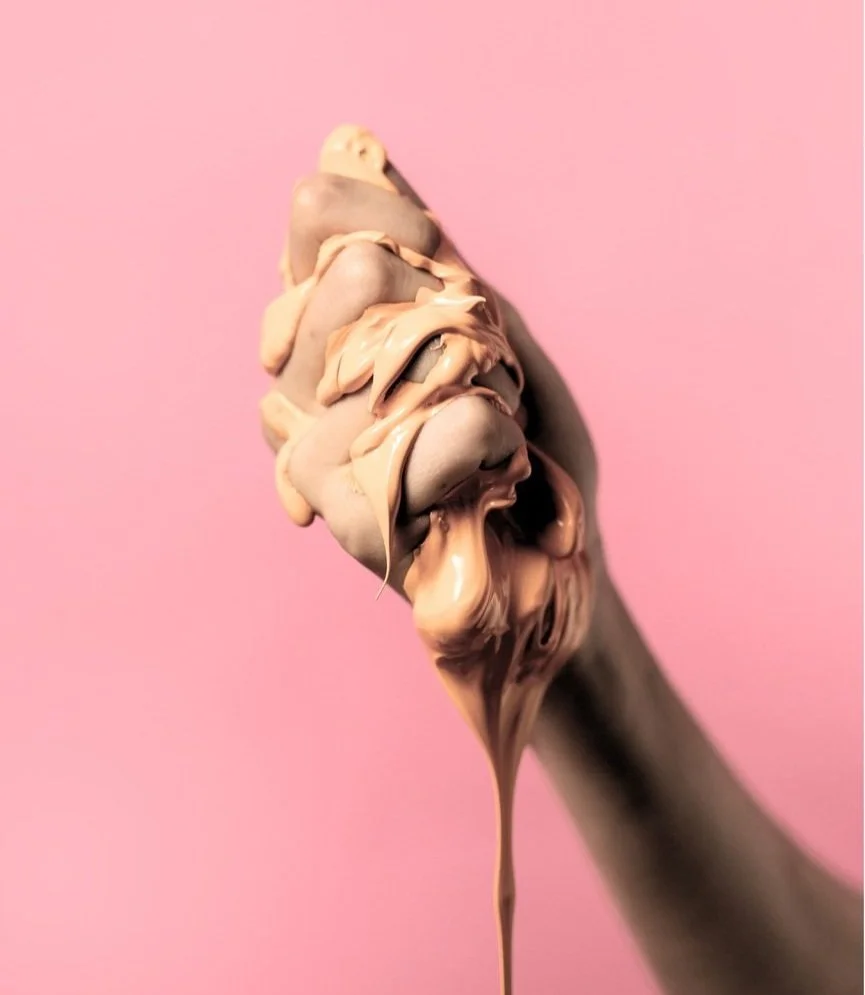Oobleck and Transformative Nature
A Counseling Activity to TEach Kids About Emotion Dynamics
What is Oobleck?
Oobleck is a fun and easy demonstration of a non-Newtonian fluid. The name is a reference to the goopy precipitation in Dr. Suess’ 1979 book, Bartholomew and the Oobleck.
Made from a mixture of cornstarch and water, Oobleck seems thinner and liquid-like at rest, but turns thicker and solid-like under pressure. It doesn’t exactly follow the expected behavior (or viscosity) of either a liquid or a solid—it is a non-Newtonian fluid!
Non-Newtonian fluids are kind of like us—their behavior is variable depending on stress! This hands-on sensorial experiment can help kids understand that stress (anxiety, frustration, disappointment, failure, anger) can change our behavior.
Read on to learn how to make Oobleck and how to talk to kids about transformative nature.
Oobleck Recipe
newspaper
mixing bowl
measuring cups
1 cup of cornstarch
1/2 cup of water (or more)
Spread out the newspaper on your work surface (this experiment is messy!).
In a large mixing bowl, pour in 1 cup of cornstarch.
Slowly add the water to the bowl while mixing with your hand or a spoon.
If it’s too dry, add more water. If it’s too wet, add more cornstarch.
You will know it’s done when it feels like a solid when tapped.
NOTE: Do NOT dispose of Oobleck in plumbing (sink, toilet, etc). Rather, put it in the garbage or dilute it with water and dump it outside.
What is Transformative Nature?
Transformative nature refers to the way that people behave differently when exposed to stressors (just like Oobleck!). Stressors can have a deep impact on behavior and can influence our self-perception, how we interact with our surroundings, and how we exhibit emotions. When faced with stress, children may display a range of responses from withdrawal and moodiness to heightened aggression or defiance. Human nature is dynamic and it is important to understand how stress can effect the trajectories, patterns, and regularities of emotions so that we can practice empathetic management and support.
Talking Points:
While manipulating the Oobleck, try these talking points:
Stress has two meanings (see below). We can apply stress to Oobleck in the form of pressure. What kind of emotional stress have you experienced?
Oobleck feels solid when under stress. How do you feel under stress? Is it a comfortable feeling?
Do you think stress can be a good thing?
Some people feel hardened by stress (closed-off, angry, pessimistic). Why do you think stress changes our behavior?
What kind of things might soften a stressed person?
Viscosity changes the way a liquid flows. If a liquid has high viscosity, it will be slow-moving like honey. If a liquid has low viscosity, it will be free flowing like water. Humans aren’t viscous, but our emotions can feel that way sometimes. Talk about a time you felt high viscosity (slow moving). Talk about a time you felt low viscosity (free flowing). Which do you prefer and why?
Coping skills can help us manage stress. Can you think of three coping skills?
Explore our curated booklist about BEHAVIOR for further exploration on this topic!
Emotion Equations Worksheet
This worksheet helps kids understand how different environmental, physiological, social, emotional, or physical factors may effect their emotional expression. When kids understand their feelings, they are better able to self-regulate and have empathy for themselves and others.
Find a free PDF printable version of this resource and others in our Therapeutic Activities tab!
Play Therapy Enhancement: Incorporate toys into the demonstration to increase engagement.
Drive, dig, dump, roll, and push the Oobleck around the bowl!
How do baby animals play in the Oobleck?
Use tools to uncover fossils hidden in the Oobleck!
SCIENCE VOCABULARY WORDS: Oxford Learner’s Dictionary
Coping Skills: the methods a person uses to deal with stressful situations; these may help a person face a situation, take action, and be flexible and persistent in solving problems
Hypothesis: an idea or explanation of something that is based on a few known facts, but that has not yet been proven to be true or correct
Liquid: a substance that flows freely and is not a solid or a gas
Non-Newtonian Fluid: a material that appears thicker or thinner depending on how it is physically manipulated
Solid: a substance that is stable in shape and is not a liquid or gas
Stress: 1. emotional pressures or worries caused by difficult situations in a person’s life; 2. physical pressure put on something
Transform: to change the form of something
Variable: likely to change; not constant
Viscosity: the quality in a liquid of being thick and sticky; the quality of not flowing freely
A free printable version of this information is available in our Therapeutic Activities Tab!
CLICK HERE to explore our pediatric mental and behavioral health activities.
REFERENCES
How to make oobleck | Crafts for Kids. (2022, March 23). PBS KIDS for Parents. https://www.pbs.org/parents/crafts-and-experiments/how-to-make-oobleck
Kuppens, P., & Verduyn, P. (2017). Emotion dynamics. Current Opinion in Psychology, 17, 22–26. https://doi.org/10.1016/j.copsyc.2017.06.004
Oobleck’s weird behavior is now predictable. (2019, October 5). MIT News | Massachusetts Institute of Technology. https://news.mit.edu/2019/oobleck-behavior-predict-cornstarch-1006#:~:text=It's%20a%20phenomenon%20many%20preschoolers,solidifies%20into%20a%20rubbery%20ball.
Oxford Learner’s Dictionaries | Find definitions, translations, and grammar explanations at Oxford Learner’s Dictionaries. (n.d.). https://www.oxfordlearnersdictionaries.com/us/
Wordsmyth. (n.d.). Children’s Dictionary by WordsMyth. https://kids.wordsmyth.net/we/







